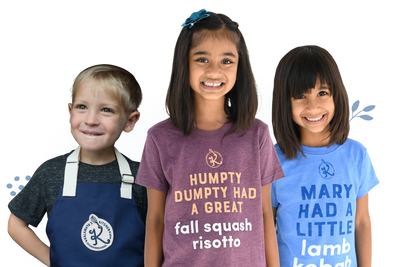
Taste Bud Profile
Asha Gomez

Talking to Chef Asha Gomez is like walking into the best hug of your life. Asha's warmth surrounds everyone in her presence, whether that's in real life or through a screen. I've admired her for years, and it has been such a gift in my life to get to know her as a friend. One of the main things I've learned from Asha is to not let others put you in a box—you are what you want to be, and not what others say you are. She has one of the kindest souls I've ever encountered, and I cannot eat a mango without thinking of her and smiling!



Asha Gomez: I think my love affair with food started with a singular mango. I grew up on Kovalum Beach, and I can remember waking up every day to the sound of waves crashing against the rocks, fishermen chanting as they pulled in their nets with the night’s haul, church bells tolling… it was a magical setting for childhood. My earliest food memory is etched in my mind’s eye. There was a tiny room in my Grand Aunt’s house with cobalt blue doors where she kept fruit to ripen.
In the summertime, there were baskets and baskets of mangos in there. I remember standing in front of that blue door, and when it would open, the scent that would waft out of the room. I remember eating the fruit, and the feeling that it gave me—I think my love affair with food started with a singular mango. The colors, the scents, the velvety texture, not just sweetness but a tang, nuance, and slight bitterness—it’s so vivid. And to this day my love affair with the mango has never ended.
I grew up eating appams. I remember the whole process of the rice being soaked and ground, adding coconut milk and toddy—my mom used fresh toddy to ferment the dough instead of yeast—watching the dough being made and then the magic of the actual appams being formed—a spongy soft center with crispy lace edges. I make appams in my own kitchen today, though it’s a slightly easier now than everything my mom did by hand.

I always think of something Anthony Bourdain said, “You can respect tradition, but not to the point where you’re afraid of innovation.”
Because then food would be stagnant, which it can’t be, because people aren’t. The beauty of the food we get to experience in the global community today is in the fact that it’s constantly evolving, and we get to be here for it. It’s so, so beautiful.
I’m fortunate enough that I get to travel a lot with my son, Ethan. For parents that are not able to take their kids to another country, the best way to do it is through food. You expose your children to different cultures through different cuisines.
It connects them in some way or another to that culture, its traditions, its people—it’s never just introducing them to food but to another way of life. Having acceptance of other food means having acceptance of other people. And I do think that on a base level, having that exposure is just good for your kid’s eating habits—Ethan will try everything at least once. He may not like it—but he will always try it, because exposure has always been part of his life.

To make food relatable to people you have to be a storyteller. You have to be able to connect the dots for people through your storytelling, and through your food. There is so much more meaning to a dish when there is a story behind it. What I put on the plate is the sum total of my life experiences—the multiple countries I’ve called home, the kitchens I’ve cooked in across the globe, the friends who have opened their homes to me, all the flavors I’ve had the joy of experiencing from around the world—that’s what’s reflected in my cooking. The food that ends up on the plate is really an evolution and a reflection of who I am as a person.

